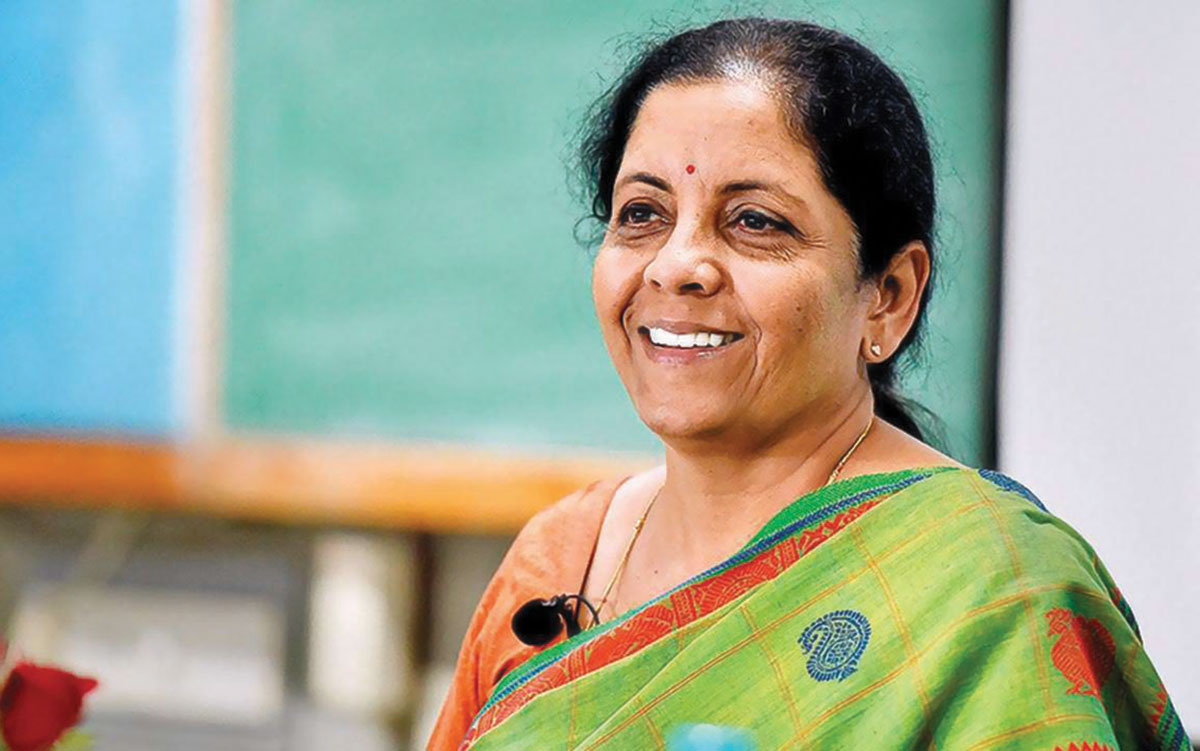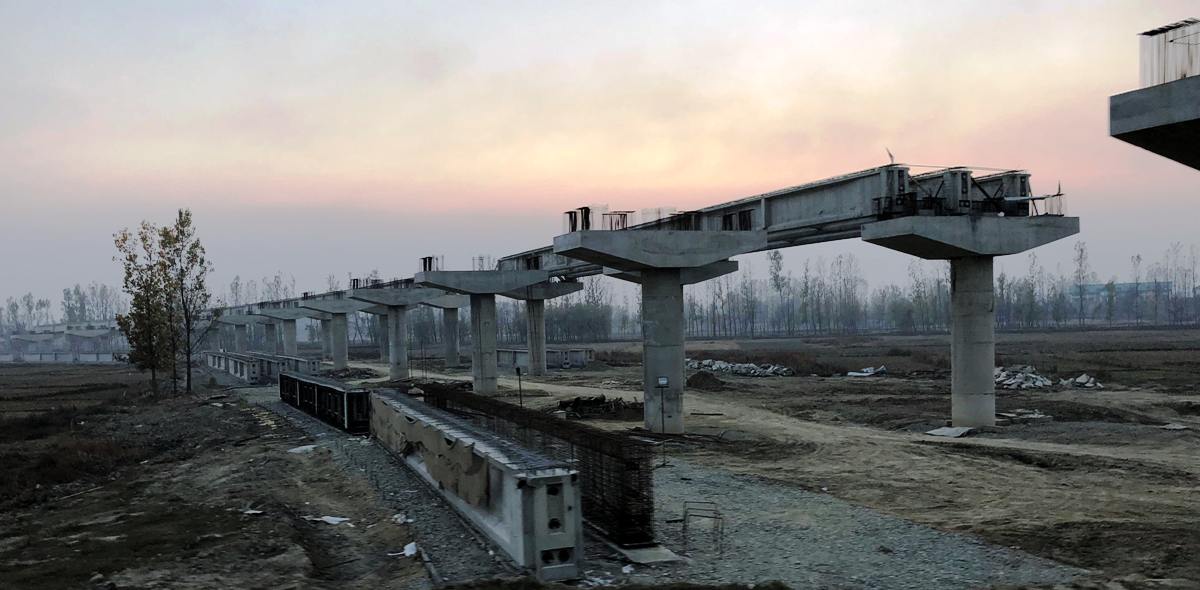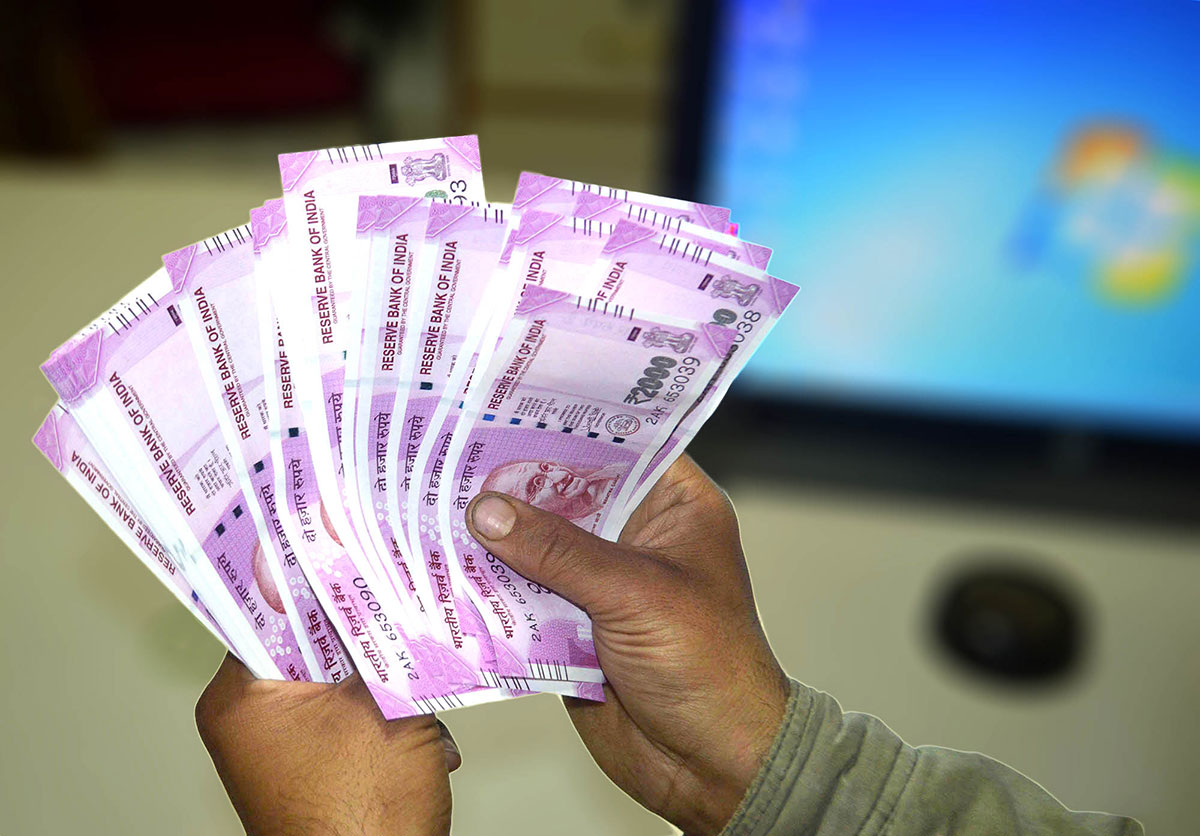The fifth consecutive budget for Jammu and Kashmir that the Lok Sabha passed last week, retains the focus on low expenditure on development and establishment, reports Masood Hussain

The fifth consecutive budget proposals presented by Finance Minister Nirmala Sitharaman in Lok Sabha anticipate an overall expenditure of Rs 118728 crore in the fiscal 2024-25. The proposed allocations are marginally up in comparison to the budget estimates of Rs 118500 crore for the current fiscal 2023-24. The factors responsible for not resizing the budget estimates could include the administration’s inability to ensure the incomes and manage expenditures as per the budget estimates in the current fiscal.
Income
On the income side, the budget estimates suggest Rs 20654 crore (17.39 per cent of total income from all sources) will be Jammu and Kashmir’s own tax revenue, Rs 9661 crore (8.13 per cent) will be non-tax revenue, Rs 56814 crore (47.85 per cent) will come from the centre as grants. The government will raise Rs 10732 crore – 9.03 per cent of the total fund requirement in the year, through additional resource mobilisation.
Besides, the estimates suggest that the government will borrow Rs 20867 crore (17.57 per cent) of which Rs 101 crore will be a non-debt creating fund.
A detailed ‘own resource’ break-up suggests that Jammu and Kashmir will generate Rs 14000 crore from SGST and IGST, Rs 2600 crore as excise duty, Rs 1900 crore as taxes on sales, Rs 800 crore as stamp and registration duty and another Rs 1354 crore from ‘other’ taxes.
On the non-tax front, the Jammu and Kashmir government anticipates collecting Rs 6000 crore as a power tariff and another Rs 3661 from other sources.
Expenditure
Of the anticipated Rs 118728 crore expenditure in the financial year starting April 1, 2024, the budget suggests that Rs 31566 crore (26.58 per cent of total expenditure) would go to salaries, Rs 13651 (11.49 per cent) to pensions, Rs 8017 crore (6.75 per cent) to ‘other’ primary revenue expenditures; Rs 6500 crore (5.47 per cent) to power purchase, Rs 866 crore (0.72 per cent) for maintenance, repairs, materials and supplies, Rs 4855 crore (4.08 per cent) as grant in aid and another Rs 4435 crore (3.73 per cent) towards Central Sponsored Scheme (CSS) implementation. Most of the CSS are literal joint ventures in which most of the requirement comes from the central government and the beneficiary states are supposed to contribute part of it.
Debt management and interest payment have always remained crucial for all states and the central government. In the next fiscal, the budget estimates suggest, that Jammu and Kashmir will spend Rs 10272 crore (8.65 per cent) on the payment of interest on loans, Rs 11710 (9.86 per cent) crore on repayment of debts and will disburse Rs 25 crore as loans and advances.
Developmental Activities
The amount that will go into the developmental activities includes Rs 15919 crore (13.4 per cent) that will be spent under Union Territory, districts and through the Prime Minister Development Programme (PMDP) and another Rs 10412 crore (8.76 per cent) for implementation of various CCS. A Rs 500 crore corpus is slated to be spent on equity and investment.
Sitharaman has outlined the entire size of the budget for Jammu and Kashmir but has sought a Vote on Account for a Rs 59,364 crore interim budget, in the wake of the country going to nest general elections in early 2024. This leaves room for any change in the income and expenditure of Jammu and Kashmir after the new government is in place at Delhi but, by and large, the size is expected to remain the same.

Most of the funds will go to the allocated areas of activity for committed expenditures and the addition of infrastructure as per the systems in vogue. However, the budget has indicated certain expenditures that may be outside these routine activities. These include Rs 1313 crore for “strengthening de-centralized governance by providing for local area works of panchayat and urban local bodies”, Rs 660 crore on the Jammu and Kashmir’s equity for setting up of Ratle, Kwar, and Kiru hydropower projects being implemented through CVPP; Rs 500 crore for capitalization of the Cooperative, Rural Banks and the JK Bank; Rs 400 crore for construction of transit accommodations for Kashmiri Pandit employees; Rs 390 crore for Flood Management Project of River Jhelum; Rs 174 crore for development of model schools under PM-Shri scheme; Rs 150 crore for developing rooftop solar and other avenues of new and renewable energy. The security-related expenditure will include spending Rs 59 crore for the construction of the Police Housing colony and Rs 45 crore for the construction of bunkers and digitization and CCTVs in Police Stations.
Current Fiscal
All budget estimates are seen in continuation with what has already happened. This is as true with incomes as it is for the outgo of the resource. The plethora of documents presented at the time of the estimate presentation refers to three indicators – one, the estimate of allocations for next year and the revised estimates of the last fiscal. In certain cases, there are pre-actual actual income and outgo that sometimes find mention in the public finance management system for adding clarity to the huge data.
The data suggest that the administration in Jammu and Kashmir has not been able to align with the estimates put in the budget for 2023-24, the current fiscal.
Take the case of income. Against an anticipated revenue receipt of Rs 106061 crore in 2023-24, the administration, according to the budget estimates, has been able to raise Rs 84603 crore only. So where is the shortfall?
The government expected to raise Rs 20349 crores as its own tax revenue but the revised estimates suggest it could be around Rs 16073 crore only. The target for 2024-25 is Rs 20654 crore.
The non-tax revenue, which comprises mostly the power tariff and various fees instead of services and sale of forest and agriculture goods, was supposed to be Rs 13593 crore. The revised estimates for the current fiscal put it at Rs 7864 crore, which is nearly half of the budget projects. The target for the 2024-25 stands at Rs 9661 crore.
Resources from the central government were supposed to be Rs 64319 crore but the revised estimates put this key resource at Rs 59666 crore. The target for the next fiscal is Rs 56814 crore.
Jammu and Kashmir government had planned to raise Rs 7800 crore under Additional Resource Mobilisation (ARM) but has now re-estimated the income at Rs 1000 crore. Interestingly, the estimates for 2024-25 put ARM income at Rs 10732 crore.
Cumulatively, the overall shortfall in the revenue receipts is at Rs 21458 crore according to the revised estimates for the year 2023-34.
On central fund devolution, the shortfall has been on the development side and not on the committed expenditure. The erstwhile state share that is now coming as a grant from the Home Ministry is more than anticipated. It was supposed to be Rs 35302 crore for 2023-24 but is now estimated to be at Rs 41472. Mostly entitled grants including the revenue deficit grants, the overall devolution has been at Rs 43969 crore against an anticipated Rs 37533 crore.
However, the default has been on the developmental front. Under PMDP and allied funds, Jammu and Kashmir expect to receive only Rs 4805 crore against the anticipated Rs 7900 crore as per the 2023-24 budget. Under CSS, Jammu and Kashmir hopes to receive a total of Rs 10892 crore against the stipulated Rs 18886 crore in 2023-24. The budget makers seem to have taken a lesson and put the estimates of these developmental funds at Rs 16847 for 2024-25.
Surging Debts
As the projected income dipped, the administration managed the funds through capital receipts by raising more debts. Budget estimates for 2023-24 had suggested the Jammu and Kashmir government would raise Rs 12439 crore during the year. However, the revised estimates indicate the government is likely to end up raising Rs 23594 crore of different categories of loans by the end of the financial year, which is Rs 11155 crore more, almost 90 per cent more than estimates.

The budget documents put the accumulated overall debt at Rs 112797 crore which is 49 per cent of Rs 227927, the GDP of Jammu and Kashmir at current prices.
Debt servicing is a key component of the public finance systems across all governments. In fiscal 2023-24, the budget documents suggest the government repaid a loan of Rs 10420 crore (part of capital expenditure) against an anticipated allocation of Rs 8099 crore. Besides, the government paid Rs 9435 crore as interest on debt against an allocation of Rs 9635 crore. The loan interest being a committed expenditure is part of the revenue expenditure of Jammu and Kashmir.
This essentially means Jammu and Kashmir spent Rs 19855 crore on managing its debt portfolio in 2023-24. For the next fiscal, this figure has been anticipated at Rs 21982 crore.
Expenditure
The establishment is a major cost to Jammu and Kashmir’s public expenditure. It involves the salary and the pension benefits to the staff that reaches the age of superannuation. For fiscal 2023-24, the budget had anticipated an outgo of Rs 33530 crore on salaries but the revised estimates put it at Rs 30575 now, indicating a bit of saving. Against Rs 12525 crore set aside for pensions, the net outgo is now re-estimated to be Rs 13646, which is more than anticipated.
This essentially means that the establishments’ costs which were supposed to be 38.86 per cent of the overall expenditure in 2023-24, will now be around 40.87 per cent of the yearly spending as per the revised estimates. The other information that the data suggests is that while the salary component is slightly shrinking, the pace of retirement is increasing. Off late, Jammu and Kashmir has been witnessing a very low recruitment by the government. By the end of March 2023, the number of employees on the government rolls was at 412277, the lowest in the last 10 years. This number has marginally increased to 417613, as per the information revealed in the budget estimates.
For the year 2024-25, the budget estimates suggest that it will be spending Rs 45217 crore on the salary and pension component. This means 38.08 per cent of the entire budget would fund the government’s own weight.
Power Bills
The other component that has been perennially bleeding the public finance system in Jammu and Kashmir is the power purchase. The 2023-24 budget anticipated spending Rs 3040 crore on power purchase but the revised estimates put the figure almost at a 100 percent surge at Rs 6500 crore. In the next fiscal, the government has set aside Rs 6500 crore for power purchase.
Interestingly, the government had anticipated to raise a power tariff of Rs 6000 crore in the year. It has been able to collect a tariff of Rs 4654 crore, which in itself is a record. The target for realising the power tariff for 2024-25 remains unchanged – Rs 6000 crore.
Development
In this entire style of income and expenditure, it is developmental activities take a hit. The 2023-34 budget estimates suggested the government will spend Rs 33193 crore on pure developmental activities – Rs 17961 crore on district plans, PMDP and other schemes and Rs 15232 crore under CSS. Had this happened, it would slightly more than 28 per cent of the overall spending would mean new infrastructure. However, the revised estimates anticipated that Jammu and Kashmir may be able to spend Rs 21500 crore on put development, which means only 19.87 per cent of the yearly spend will be on development. The budget makers have been aware of this and that is perhaps why they have identified resources worth Rs 21500 crore – 18.10 per cent of the Rs 118728 for development in fiscal 2024-25.















